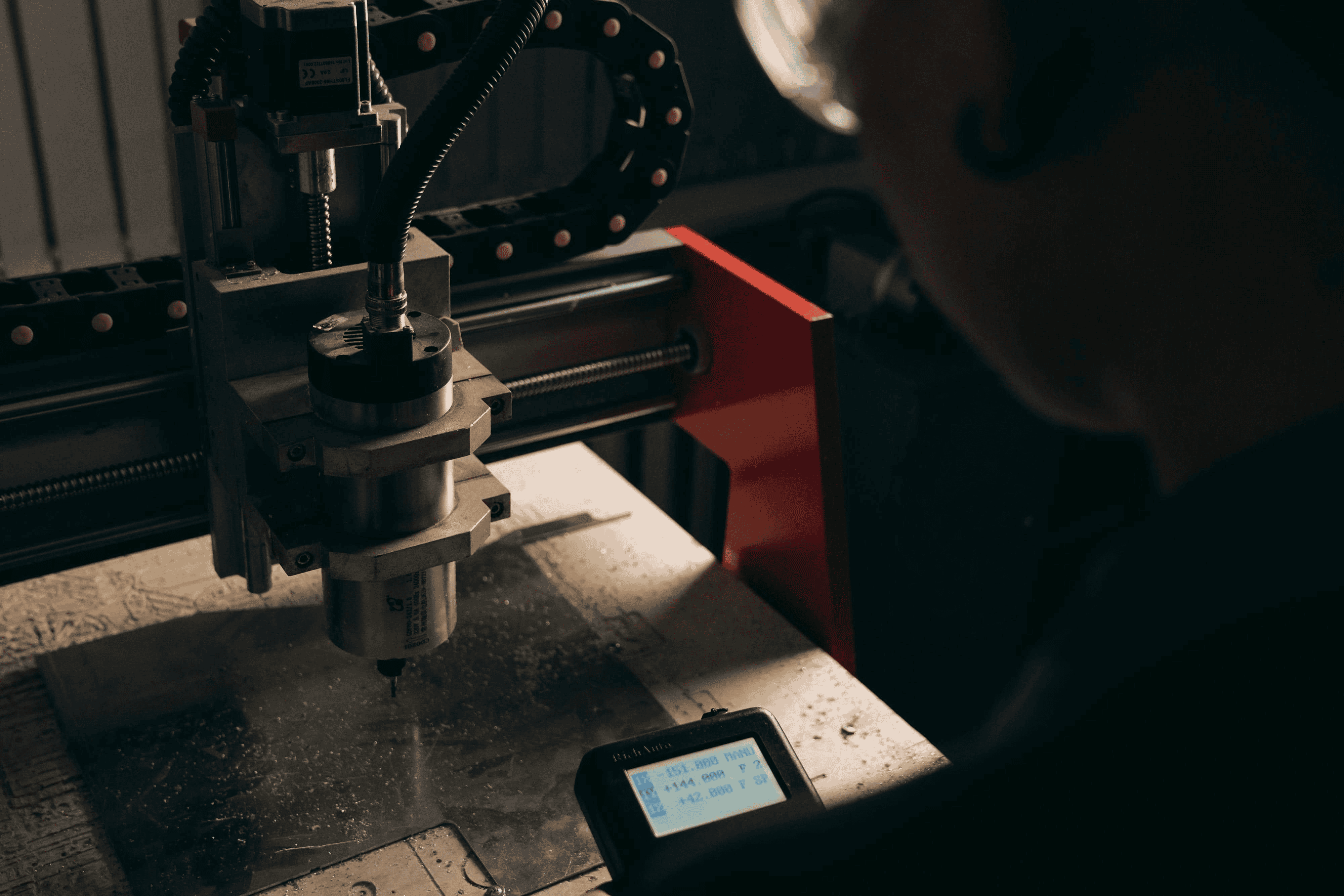Custom Fabrication

Metal laser cutting and bending services for precision steel parts in Fayetteville Arkansas
Metal laser cutting services have become the standard for repeatable, tight tolerance steel metal cutting. A fiber laser concentrates energy into a narrow spot, melting or vaporizing material as motion control guides the beam along the programmed path. Assist gases such as nitrogen and oxygen clear molten metal, influence edge color, and help control the heat affected zone. Because the beam is so narrow, kerf is small, which improves part fit, nesting efficiency, and final assembly alignment.
The quality of a cut comes down to several variables. Power, focus position, nozzle size, gas type, gas pressure, and feed rate work together to shape the edge. For stainless and aluminum, nitrogen is common for bright edges with minimal oxidation. For carbon steel, oxygen can speed cut rates while leaving a darker oxide edge that may be acceptable for some painted parts. Proper parameters reduce dross and limit rework, saving time during trimming metal and finishing.
Program setup matters. Nesting software arranges parts on the sheet to minimize scrap and reduce heat buildup. Micro tabs or lead ins keep parts secure during the cut, preventing tip ups that could blemish an edge. Pierce points are placed away from cosmetic regions. Good programming shortens cycle time while protecting surface quality.
After cutting, trimming metal can mean removing tabs, breaking edges, and preparing features for press fit or weld. Mechanical deburring, edge rounding, and light grinding smooth the perimeter without disturbing dimensional accuracy. When heat input is controlled during cutting, flatness holds, which reduces stress during forming. Careful handling protects cosmetic surfaces and preserves powder coat readiness.
Metal bending services use a press brake to create angles and complex forms. A punch and die set applies force along a straight line, producing a controlled bend. Selecting the right tooling is essential. Air bending with a V die allows flexible angles and bend radii with the same punch, while bottom bending and coining can improve angle accuracy on thin material at the cost of higher force. The target inside radius, material thickness, and grain direction guide tool selection.
Accurate forming begins with good flat patterns. Bend allowance and K factor adjust for material stretch so the cut blank becomes the correct finished size after forming. Springback varies with material type and hardness, so angle targets are often overbent slightly to land on the specified value. Minimum flange length is tied to die opening, and hole to bend distance must clear deformation. Following these fundamentals prevents cracking, distortion, and slot elongation.
Edge quality from the laser influences bend success. Clean edges seat reliably against tooling, giving consistent angle readings along the bend line. When holes or slots fall near a bend, relief features prevent tearing, especially in thicker steel. For repeat work, a bend inspection plan with go and no go gauges or angle checks keeps parts within tolerance across batches.
The typical flow starts with a clean DXF or STEP file, material specification, finish notes, and tolerance priorities. A programmer creates the flat pattern, nests parts, and assigns cutting parameters. After steel metal cutting, parts move to deburring, then to the press brake with a clear setup sheet that lists tools, sequence, and target angles. Inspection confirms sizes, holes, and angles before any welding or coating. If powder coat or paint is required, surface prep and masking plans protect critical dimensions and mating features.
Lead time depends on complexity, material availability, and finish steps. Simple flat parts may ship quickly, while formed assemblies with tight stack tolerances need more checks. Communication about critical interfaces keeps the process smooth. When the cutting strategy, trimming metal approach, and bending plan work together, parts land on size and assemble cleanly, saving downstream labor.
As you evaluate providers, ask about laser capacity, maximum sheet size, material types, press brake tonnage, and the control system used for angle correction. Inquire about quality checks, file formats, and how revisions are handled. A solid partner will explain how they manage heat input, kerf compensation, and springback to hit your prints without guesswork.
For teams that want a single shop to cut, form, and finish, integrated services reduce handoffs and protect quality. A shop that owns the entire workflow can correct upstream issues before they affect final assembly, keeping timelines predictable.
You can learn more about our process on Custom fabrication and see specific capabilities on Fabrication services. If you are comparing partners, read more at Why choose OZK Customs.
We bring this precision work to life every day in Fayetteville Arkansas. OZK Customs runs steel metal cutting on modern fiber equipment, handles trimming metal and deburring in house, and forms parts on accurate press brakes with documented setups. Whether you need flat parts, formed brackets, or fully fabricated assemblies, our team can move from file to finished component with care and speed.
Let us prove it. Share your drawings, material, and finish needs, and we will quote quickly, cut cleanly, and bend precisely so your parts fit the first time.
Ready to turn drawings into accurate steel parts in Fayetteville? Share your files and requirements—OZK Customs can quote quickly, cut cleanly, and bend precisely. Our in house team delivers tight tolerances, crisp edges, and consistent forming. Tell us what you need, and we will build it right.
ADDRESS:
6159 E Huntsville Rd, Fayetteville, AR 72701
PHONE:
(479) 326-9200
EMAIL:
info@ozkvans.com